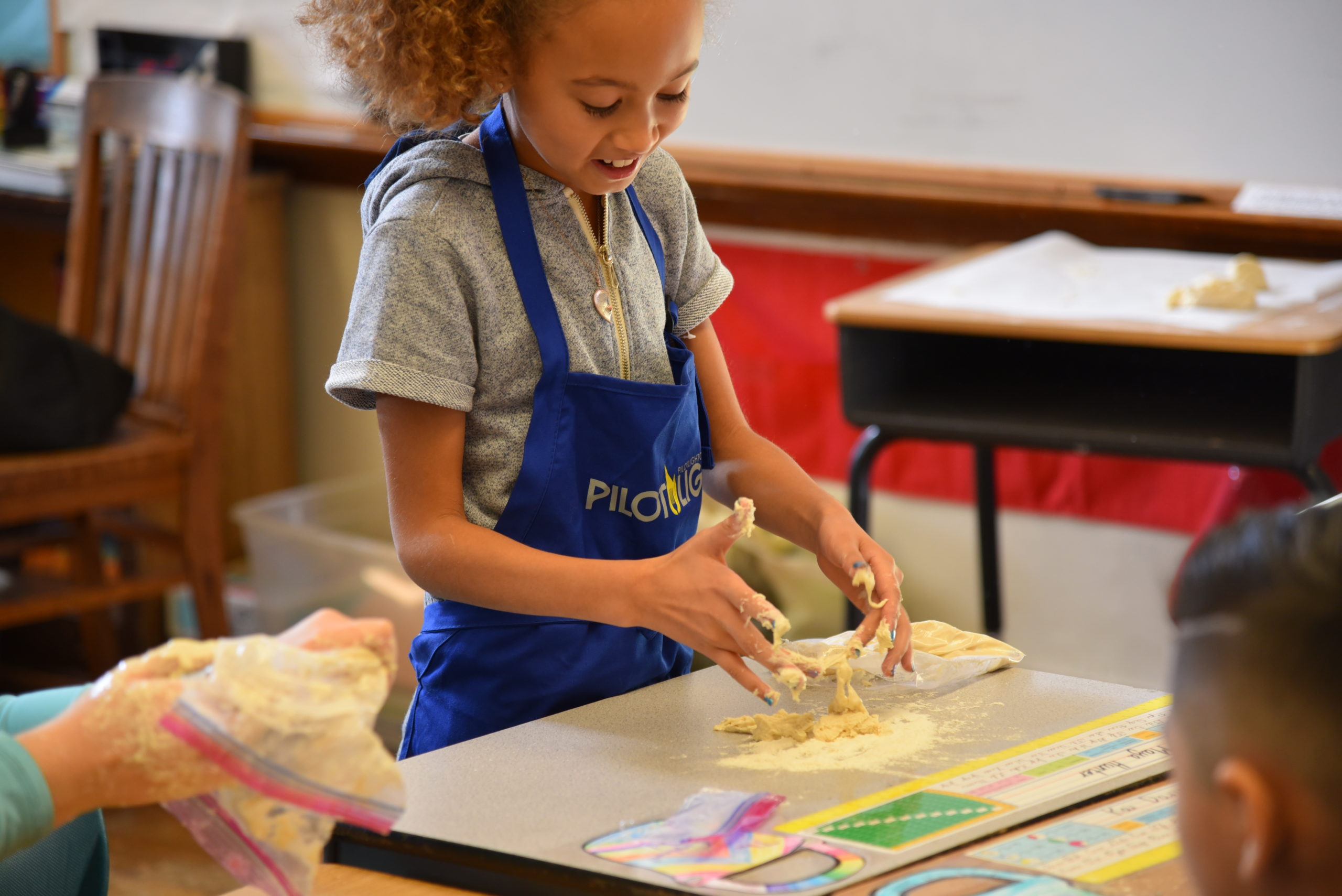“Every child, regardless of socioeconomic status, deserves access to knowledge that allows them to make positive and informed food choices. This standard harnesses the necessary framework to ensure this right for children of all ages on a daily basis. The actual food choice is powerful, but even more powerful is the experience of autonomy over one’s body that access to nutritious and vibrant food allows. To empower youth with this standard is to not only guarantee them access to nutritious foods, but to shape the minds of the future leaders who will continue to ensure the right of this access.”
– Justin Behlke, Culinary Director, Pilot Light
Expectations
Students who demonstrate understanding can: prepare a nutrient-dense meal or recipe and explain the intended impact of each ingredient.
Grade-Specific Competencies
- Understand, create, and share a balanced plate using MyPlate through the USDA website and using the “Eat the Rainbow” concept.
- Create and maintain a food journal of students’ own daily eating habits, identifying trends (lots of fruits and veggies/whole foods/etc.) and patterns (fast food breakfast on Mondays/big dinners on Sunday/etc).
- Explain how different foods make them feel (sugar = quick energy; too much junk food = upset stomach; etc) and apply this information to what they have learned from their food journals, identifying when and why they can make changes.
Real World and Community Experiences
- Trip to Farmer’s Market
Grade-Specific Competencies
- Explain the difference between whole, processed foods and the nutritional difference between them, using nutritional labels (sugars, salt and fats focused).
- Create a balanced meal for students’ own families using the MyPlate framework and knowledge of nutritional labels.
- Analyze advertisements and ingredients, using the information to create or identify alternatives to the processed foods, where possible.
Real World and Community Experiences
- Field trip to a market to analyze food labels and make a list of kid-approved nutrient-dense swaps for common snacks
- Create advertisements for nutrient-dense foods to advertise to peers
Grade-Specific Competencies
- Evaluate nutritional food labels and informational texts to make informed choices.
- Compare and contrast nutritional and economic values of prepared, packaged, and homemade meals of the same content.
- Develop an advocacy project that informs others about how to choose nutrient-dense food options when dining out.
Real World and Community Experiences
- Using a pre-packaged meal, analyze the nutritional and economic impact of the meal when compared to the same meal being made from fresh ingredients at home.
- Analyze a restaurant menu in order to identify nutrient-dense swaps
Grade-Specific Competencies
- Develop a long-term personal food plan with an overarching philosophy, daily meals with justification, ingredient lists, and recipes.
- Develop an advocacy project that informs others about how to choose nutrient-dense food options for people with various diseases, such as diabetes, high blood pressure, and heart disease and also teaches others how to read food labels in reference to health.
Real World and Community Experiences
- Tour a local grocery store and develop materials to help the community choose healthier foods.
- Meet with a local physician or dietician to learn about the impact of food choices on one’s health.

